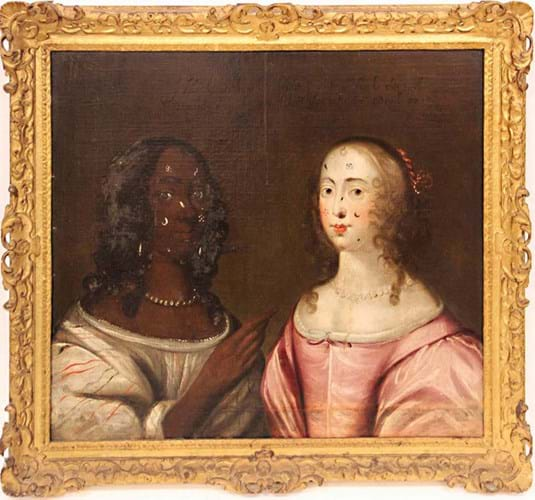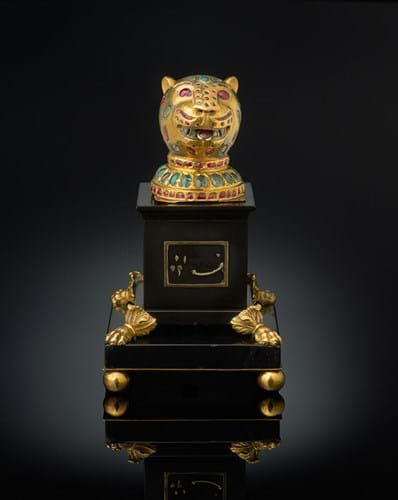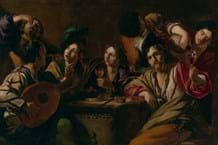
The picture was sold on June 23 at auction house Trevanion in Shropshire for a hammer price of £220,000 (front page, ATG No 2499).
Following the sale the current owner applied for an export licence. This application was temporarily turned down in the hope that a buyer in the UK can be found. Including the fees and VAT, £272,800 is the sum needing to be raised.
The government made the decision after the Reviewing Committee on the Export of Works of Art and Objects of Cultural Interest (RCEWA) argued that the painting’s departure from the UK “would be a misfortune because it is of outstanding significance to the study of race and gender in the 17th century”.
“Race and gender”
Arts minister Lord Parkinson of Whitley Bay said: “This fascinating painting has so much to teach us about England in the 17th century, including in the important areas of race and gender, which rightly continue to attract attention and research today. I hope a gallery or museum in the UK can be found to buy this painting for the nation, so that many more people can be part of the continuing research and discussion into it.”
RCEWA committee members Pippa Shirley and Christopher Baker have argued the anonymous painting is a “great rarity” as it “depicts a black woman and a white woman with equal status”.
They added: “It is not a portrait of real people, as far as we know, but the inscription reveals that it is in fact a sternly moralising picture that condemns the use of cosmetics, and specifically elaborate beauty patches, which were in vogue at the time.”
The decision on the export licence application for the painting will be deferred until March 9, 2022 and can be deferred again for another three months.
The 2ft 1in x 2ft 6in (64 x 75cm) oil on canvas had been in the collection of Lloyd Tyrell-Kenyon, 6th Baron Kenyon, who died in 2019. It was consigned to local auction house Trevanion and had previously been kept for at least a century at Gredington, the family’s Shropshire manor house which was demolished in 1980.
The ‘puritan’s warning’ in the picture is implied by the inscription above the women that reads: I black with white bespott y white with blacke this evil proceeds from thy proud hart then take her: Devill.
The picture shows the women wearing patches which had been used for centuries to cover up scars, sores and pustules, including those caused by venereal disease such as syphilis. But during the 17th and 18th centuries these patches, especially those made from expensive materials like silk or velvet, also came to be worn as adornments and were cut into decorative shapes as can be seen here.
The fashion seemingly became fairly widespread and was associated with vanity and promiscuity by puritans. In 1650 Parliament debated passing an act against the ‘vice of painting and wearing black patches, and the immodest dress of women’. Although it did not make it into law, a wider crackdown did occur on ‘nightwalking’ (prostitution) and licentious behaviour during Cromwell’s rule.
Deferrals
A number of other items that had an export bar issued this year have been deferred, including two albums of drawings, watercolours and lithographs by 19th century ornithologist John Gould (valued at £1.28m); The Nativity by Baldassare Tommaso Peruzzi; marble busts of Aristotle and Homer attributed to Giuliano Finelli and The Earl of Dalhousie by John Singer Sargent.
An export block on a gold finial that once adorned the throne of Tipu Sultan runs until at least February 2022 (ATG 2519).

There is a temporary export block on this gold finial that once adorned the throne of Tipu Sultan runs until atleast February 2022.
Other items from this year that will be leaving the UK after the export licences were approved due to funds not being raised include a rare Renaissance Mantuan roundel featuring Venus, Mars, Cupid and Vulcan (as reported in ATG No 2496) which had been valued at £20m.

This rare c.1480-1500 Renaissance roundel, wth a value of £20m, has not been saved for the nation and can be exported outside the UK.
Separately, the Arts Council published its Cultural Gifts Scheme and Acceptance in Lieu Annual Report 2020/21 revealing artworks and objects with a value of £54m had been accepted for the nation and allocated to museums across the UK.
Of the cultural objects allocated in this report, 70% were acquired by institutions outside of London.
It also revealed that more than 80% of the total tax settled was accounted for by objects that had been allocated outside of London.
High profile artworks allocated across the two schemes were Sir Anthony Van Dyck’s oil painting Portrait of a Woman (1621-27) which has been allocated to Kelvingrove Art Gallery in Glasgow; JMW Turner’s Walton Bridge which goes to the Ashmolean Museum in Oxford, Mary Fedden sketchbooks heading to the Tate and a watercolour, Girl with Butterflies, by Glasgow School member Frances MacDonald MacNair which went to The Hunterian Museum and Gallery.
Institutions which have received objects for the first-time include The Lowry in Salford; Judges’ Lodgings Museum in Lancaster; Wallingford Museum in Oxfordshire and the Yorkshire Sculpture Park.





